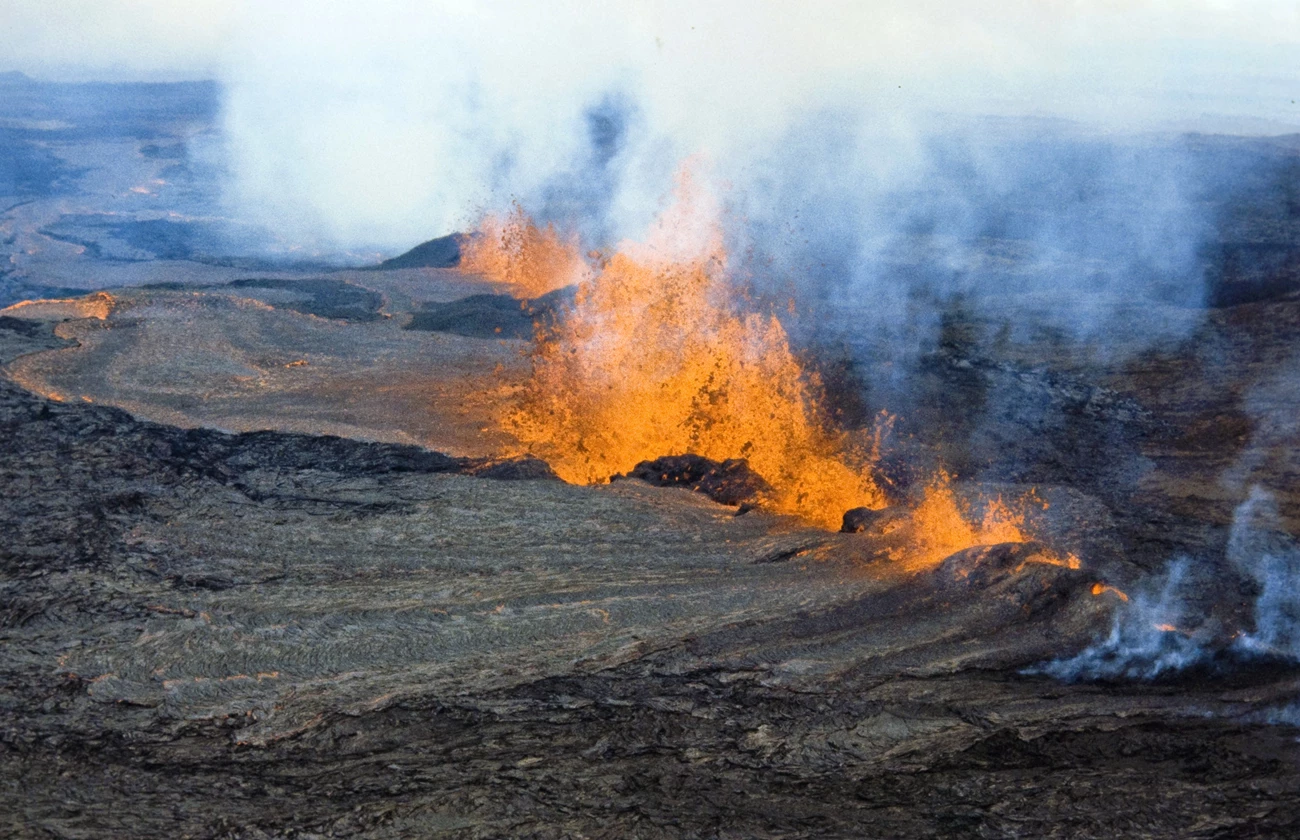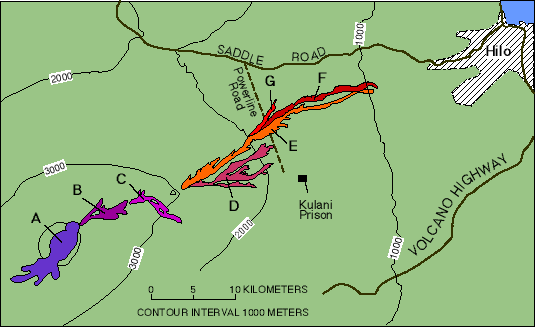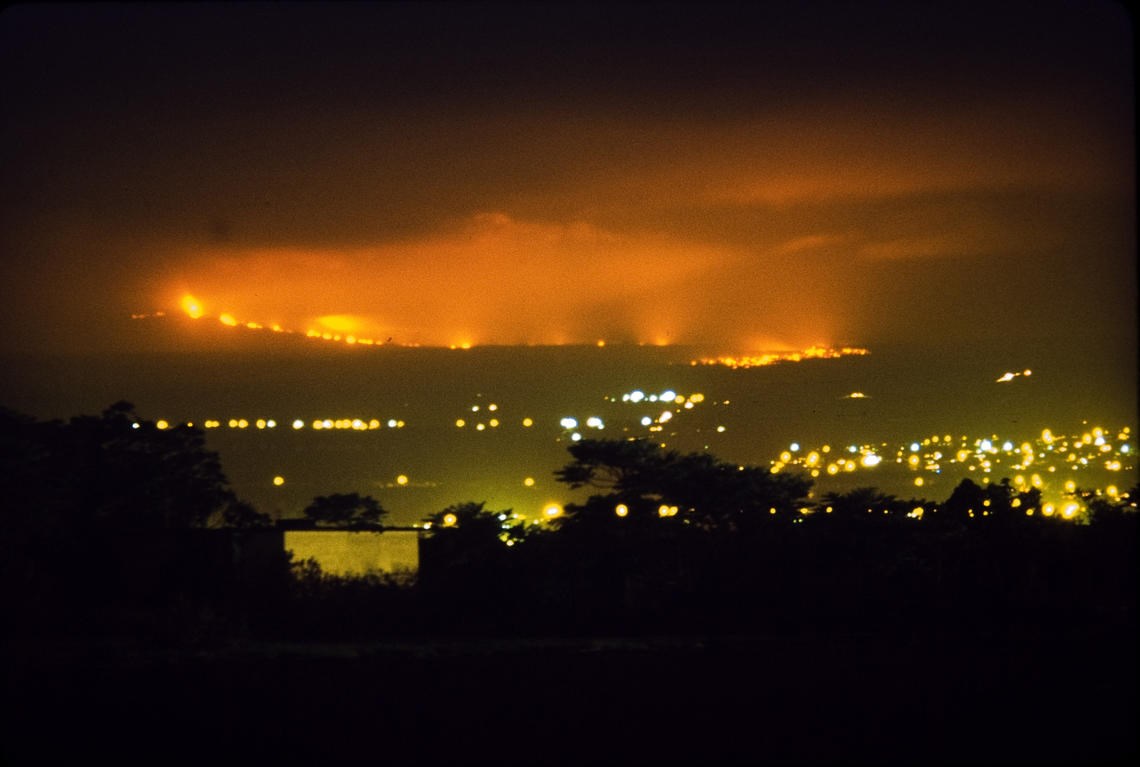|
The last eruption before its longest period of quiet in recorded history— began in March 1984. In dramatic fashion, lava descended to the doorstep of Hilo, the island's population center. 

Early in the morning of March 25, 1984, swarms of earthquakes underneath Mauna Loa began to swell. The tremors soon became so constant that nearby telescopes on Mauna Kea could not be stabilized due to continuous vibrations. By 1:30 a.m., satellites picked up indications of an eruption and people around the island reported seeing a glow above the volcano. By late afternoon on that first day, the fissure that would become the eruption's main vent opened up at 9,350 feet in elevation (2,850 m). Within hours, it expanded both mauka (toward the mountain) and makai (toward the ocean), creating a curtain of fire, a solid line of lava fountains over a mile long. 
The lava was visible from Hilo, unnerving citizens who were all too aware that the city itself is built on comparatively young lava flows. An 1881 eruption of Mauna Loa had come within 1.1 miles of the city's bayfront. Two other eruptions had also threatened the site of the city in the last millenium, so the danger was by no means unprecedented. Additional Resources:
|
Last updated: December 12, 2022
